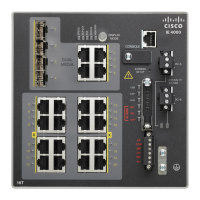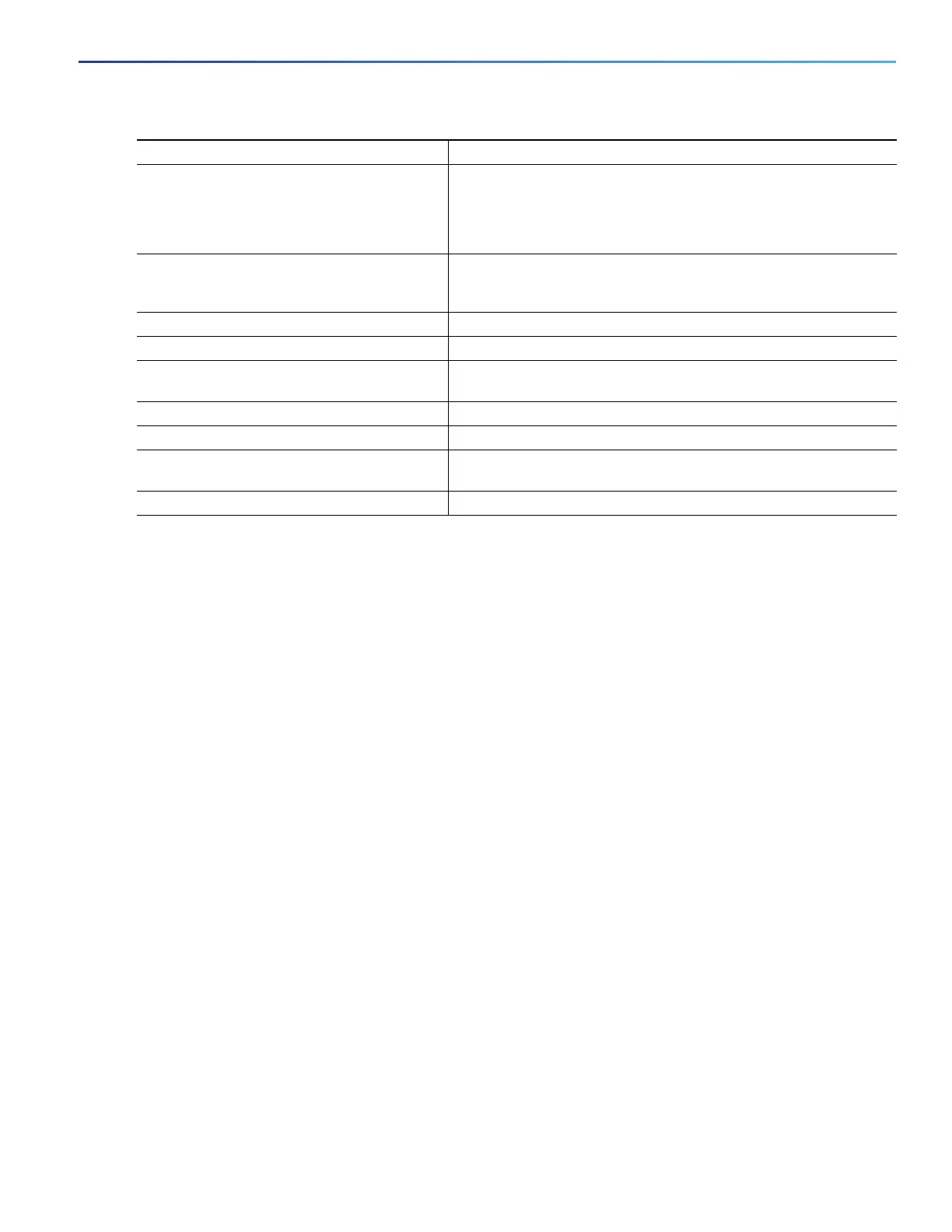621
Configuring QoS
Configuring QoS
After you have created an aggregate policer, you attach it to an ingress port. See Attaching a Traffic Policy to an Interface,
page 609.
To remove the specified aggregate policer from a policy map, use the no police aggregate aggregate-policer-name
policy map configuration mode. To delete an aggregate policer and its parameters, use the no policer aggregate
aggregate-policer-name global configuration command.
This example shows how to create an aggregate policer and attach it to multiple classes within a policy map. The policy
map is attached to an ingress port.
Switch(config)# policer aggregate example 10900000 80000 conform-action transmit exceed-action drop
Switch(config)# class-map testclass1
Switch(config-cmap)# match access-group 1
Switch(config-cmap)# exit
Switch(config)# class-map testclass2
Switch(config-cmap)# match access-group 2
Switch(config-cmap)# exit
Switch(config)# policy-map testexample
Switch(config-pmap)# class testclass
Switch(config-pmap-c)# police aggregate example
Switch(config-pmap-c)# exit
Switch(config-pmap)# class testclass2
Switch(config-pmap-c)# police aggregate example
Switch(config-pmap-c)# exit
Switch(config-pmap)# exit
Switch(config)# interface fastethernet0/1
Switch(config-if)# service-policy input testexample
Switch(config-if)# exit
This example shows how to create a 2-rate, 3-color aggregate policer and attach it to multiple classes within a policy
map. The policy map is attached to an ingress port.
Switch(config)# policer aggregate example cir 10900000 pir 80000000 conform-action transmit
exceed-action drop violate-action drop
Switch(config)# class-map testclass1
Switch(config-cmap)# match access-group 1
4. class {class-map-name | class-default} Enter a class-map name or class-default to match all unclassified
packets, and enter policy-map class configuration mode.
If you enter a class-map name, you must have already created the
class map by using the class-map global configuration command.
5. police aggregate aggregate-policer-name Apply an aggregate policer to multiple classes in the same policy
map. For aggregate-policer-name, enter the name specified in
Step 2.
6. exit Return to policy-map configuration mode.
7. exit Return to global configuration mode.
8. interface interface-id Enter interface configuration mode for the interface to which you
want to attach the policy.
9. service-policy input policy-map-name Attach the policy map (created in Step 3) to the ingress interface.
10. end Return to privileged EXEC mode.
11. show policer aggregate
[aggregate-policer-name]
Verify your entries.
12. copy running-config startup-config (Optional) Save your entries in the configuration file.
Command Purpose

